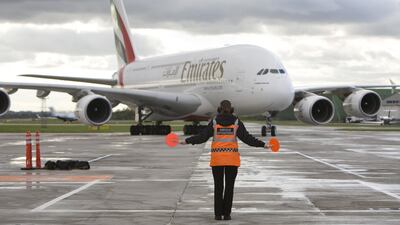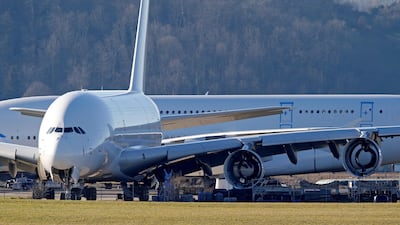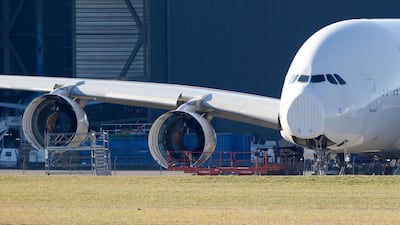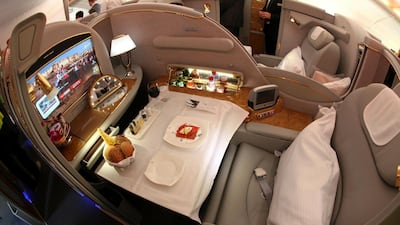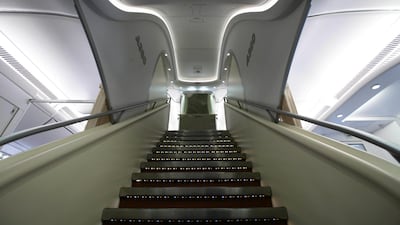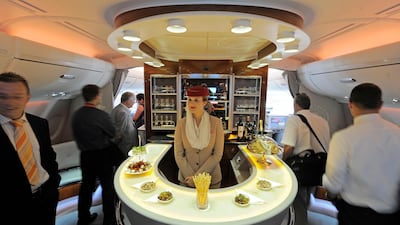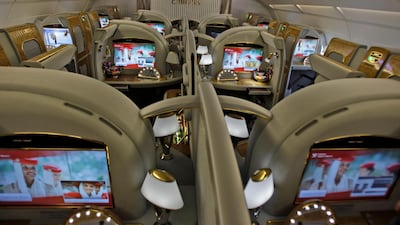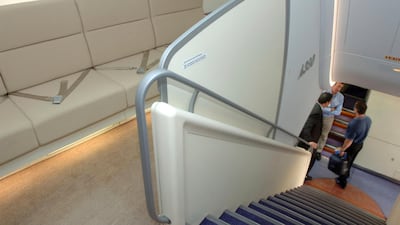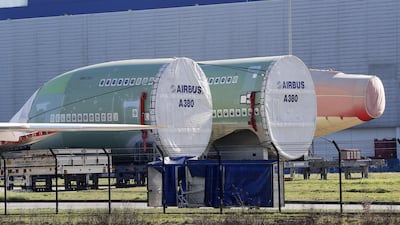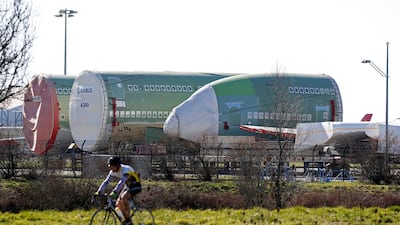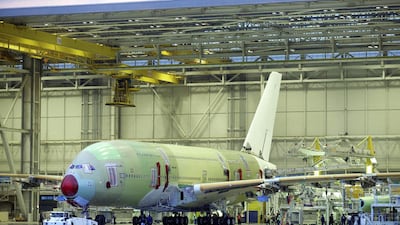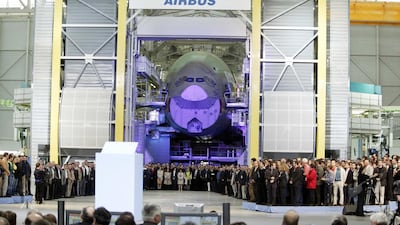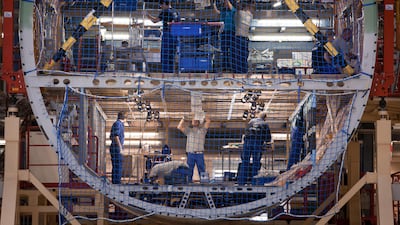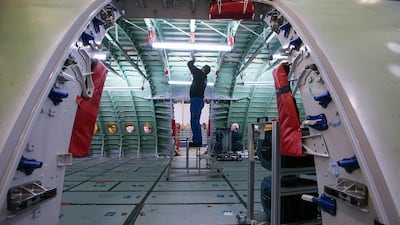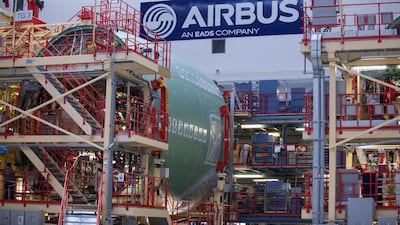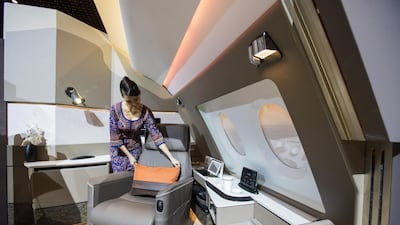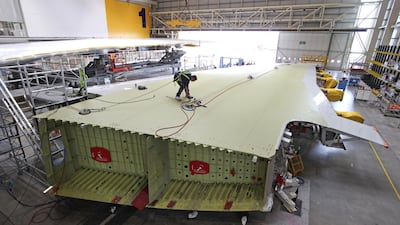When a 277-tonne double-decker airliner carrying 450 passengers swept off the runway of Singapore's Changi Airport on October 25, 2007, it ushered in a new era of air travel.
And although the slogan "flying reimagined" was not coined until years later – by Etihad – it sums up what Airbus brought to a decade dominated by low-cost travel and declining passenger experience.
As Airbus chief operating officer John Leahy said when the Toulouse-manufactured aircraft completed its first non-commercial flight to America in March 2007, “if the Boeing 747 was the flagship of the 20th century, then the A380 is the flagship of the 21st century”.
With a range of almost 15,000 kilometres, the aircraft was designed to challenge Boeing. The introduction of the four-engine jet – nicknamed the superjumbo – caused a ripple of excitement in the aviation industry.
But yesterday, Airbus announced plans to stop production of the jet by 2021, only 14 years after it launched commercial operations. But despite its short-lived glory, the A380's lifespan has been littered with special occasions.
Take-off
On October 25, 2007, Singapore Airlines flight SQ380 touched down at Sydney Airport after a seven-hour journey from Singapore. It was the first A380 commercial flight. Despite it being a rainy afternoon, crowds of aviation enthusiasts gathered at the airport to witness history.
Passengers had bid for tickets as part of a charity auction that raised more than $1.2 million. In a 2007 report by Reuters, passenger Rainer Silhavy said: "It was a very smooth ride and much quieter than the 747."
Aviation consultant Alan Crerar, who worked for Airbus as an engineer on the wing design team for the original A380 project in 2004 and now trains ground crew for airlines, said: "The first time I saw a complete aircraft at Toulouse, it was in the assembly hall and at first it didn't seem so large. But as I walked towards it I realised I'd underestimated the size of the building, and the aircraft was huge.
Despite Singapore Airlines being first, it was the rapidly growing Emirates that would soon become synonymous with the mammoth aircraft. Having placed its initial order seven years earlier, the airline flew its first A380 in 2008 from Dubai to New York.
Today, Emirates has 104 of the double-decker aircraft flying to 49 cities on six continents, with more than 80 daily departures from the airline's Dubai hub. News that production of the jet was to cease came after reports that Emirates had reduced its latest A380 order by 39 planes.
Technological brilliance
While it is indeed imposing, with a wingspan of nearly 80 metres, the double-decker aircraft is not known for its finesse. But what it lacks in aesthetics it makes up for in technology.
Touted as being greener, cleaner, quieter and smarter, the A380 would go on to set new standards in aviation tech. For Etihad's Captain Richard Dyson, "it signified a coming of age for the airline. The A380 represented a major step forward in technology and load-carrying capability."
The cockpits featured larger interactive displays. Paper flight manuals were replaced by electronic flight bags that allowed flight and maintenance crews to easily locate operational information.
Brake to Vacate technology allowed flight crews to more effectively manage approach and landing, while advanced materials meant the aircraft could offer a lower cost per occupied seat than any of its competitors.
A home of its own
In January 2013, Emirates gave the A380 a place to call its own when it opened Concourse A in Terminal 3 at Dubai International Airport. The concourse was dedicated entirely to Airbus A380s. Luxurious first and business-class lounges, spread across 29,000 square metres, were equipped with conference rooms, business centres, a spa and children's play areas.
From here, passengers flying on premium tickets were able to directly access the upper decks of the aircraft.
Five-star flights
Home to some of the best on-board amenities in the sky, the extra space that the A380 afforded gave airlines scope to play with luxury. British Airways focused on food, introducing menus developed by some of the world’s leading chefs, such as Georges Blanc and Carlo Cracco. Air France added a La Premiere cabin, which came with a private changing area and dressing table. Lufthansa opted for full-size flat-screen televisions. Emirates took things to another level with its first-class bathroom and spa, where luxury beauty products and on-board hot showers were the norm.
The OnBoard Lounge was a fully-stocked bar where customers could mingle over drinks. Etihad perhaps took the crown for ultra-luxury, introducing First Apartments on board its A380. The self-contained apartments had a large leather armchair, separate bed and space to walk around behind closed doors. The pinnacle of A380 flying was Etihad’s The Residence – the only three-roomed suite in the sky. Dyson described it as an attribution back to the golden age of flying. As the most customised aircraft in the world, the A380 quickly garnered a reputation for being akin to checking into a five-star hotel, the only difference being this one was thousands of feet up in the air.
Crerar alluded to the demise of such luxury as we say goodbye to the jet saying: “It’s probably the last we’ll see of luxury First Class. Airlines will now concentrate on Business and Premium Economy as they’re the most profitable seats.”
Celebrity status
In keeping with its affinity for luxury, the A380 found itself with many celebrity friends. In Abu Dhabi, Nicole Kidman promoted Etihad’s A380 luxury suite. In the television advert, the Academy-award winning actor was served made-to-order dinner by a white-gloved butler before she wandered through the cabin where other passengers could be seen enjoying the privacy of the A380’s pod-like seats.
In neighbouring Dubai, Friends star Jennifer Aniston became the celebrity face of the Emirates' A380. The actor featured in an advert where she wandered, confused, around an unspecified US airplane cabin. Dressed in a bathrobe and looking for the shower, Aniston appeared horrified when she is told that neither exists. She then wakes from this nightmare to find herself on board an Emirates A380, where both facilities are available.
Making history
While it revolutionised commercial flying, the A380 was also the setting for various events that caught the eye of the world. In 2015, an Emirates A380 became the star of a stunt called the Jetman Dubai duo. Daredevils Yves Rossy and Vince Reffer donned Jetman Wings and dropped out of an aircraft to fly alongside the Emirates plane, which was cruising steadily at 4,000 feet. The trio then performed some amazing in air formations, using the Dubai skyline as a backdrop.
In Abu Dhabi, Etihad Airways transformed one of its Airbus A380s into a tribute to the founding father of the UAE. Specially commissioned livery depicting the late Sheikh Zayed’s portrait was applied to one of the national carrier’s jets, which was then deployed on various humanitarian aid missions. The plane was also used as part of the 10-year anniversary celebrations for Etihad Airways Abu Dhabi Grand Prix, taking part in a low-flying display of aviation finesse.
The final chapter
For Crerar, the Airbus announcement is sad news. “”It is sad that something you helped produce wasn’t the success that was hoped for but though production will cease the existing A380s will be around for a few years yet.”
The last ever superjumbo will be released from the Toulouse production line in 2021, ending a memorable chapter in aviation history. Emirates have placed orders for 40 smaller A330-900 neo and 30 A350-900 jets.
While the existing jets will still soar in the skies for years to come, the end of production of the iconic aircraft marks the end of an era in aviation history that saw flying reimagined for millions of passengers.
